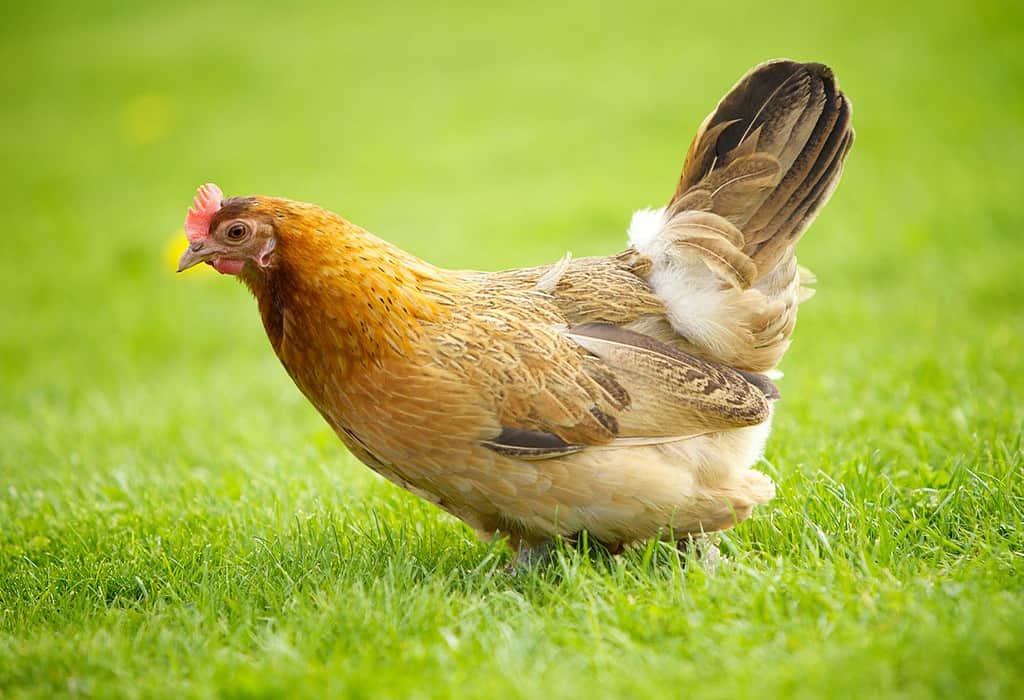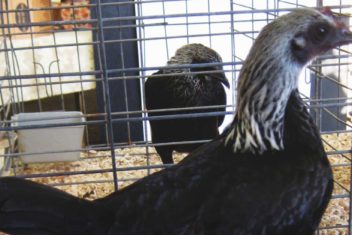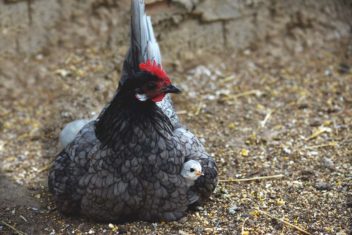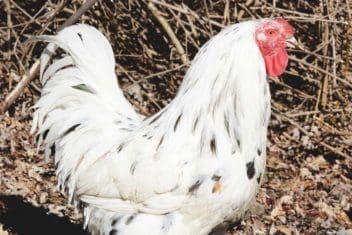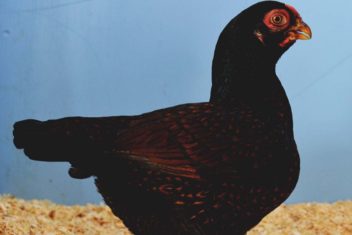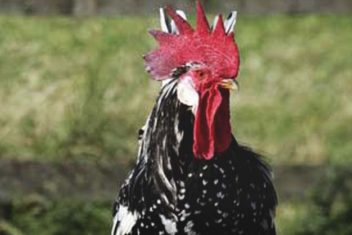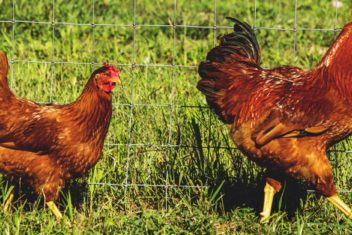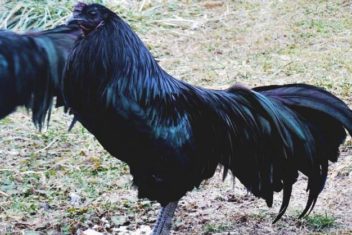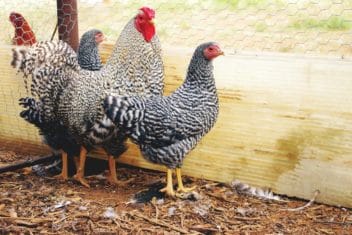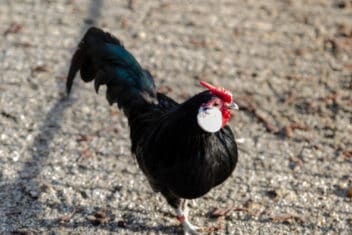Because we live off-grid in northern New England, our chickens must be tough. Norwegian Jærhøns are some of the hardiest chickens in the world. Their small bodies and moderate combs are designed to withstand severe cold.
But they also thrive in hot weather – the same small, light bodies that help them conserve energy in the winter can keep them feeling light and fresh in the summer heat. I hate to pick favorites in my flock, but my little Jærhøns are the birds I like best.
Meet Norwegian Jærhøns
Five years ago, I was buying a few Welsh Harlequinn ducklings from a woman in a neighboring town. When I went to pick them up, she mentioned that she also had Jærhøn chicks for sale.
I’d never heard of the breed, but after five minutes of conversation, I brought home five Norwegian Jærhøn chicks as well.
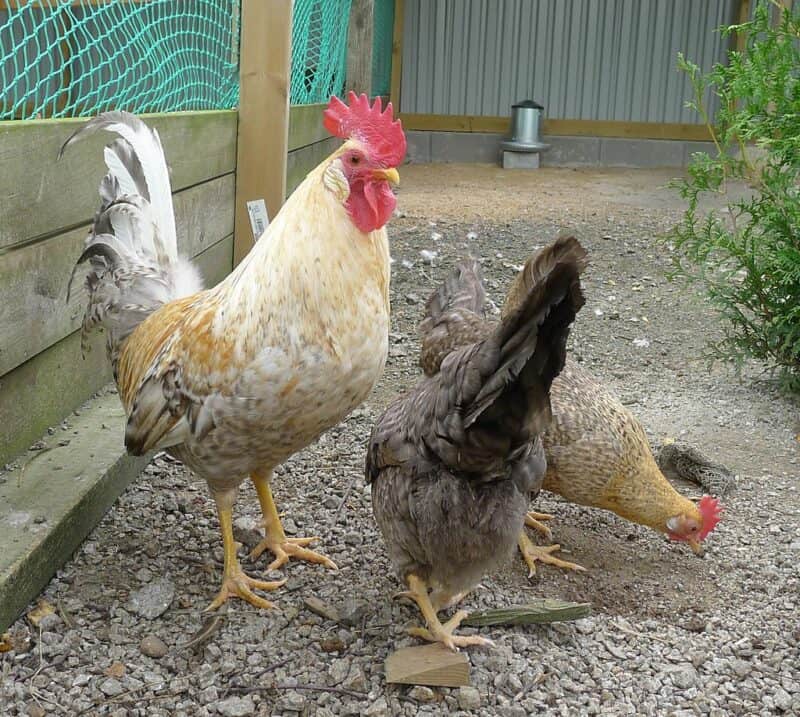
I had no idea what I was getting into with Jærhøns. The woman gave me some basic information and showed me her gorgeous flock of Norwegian birds, but that was all I knew. I soon learned the Norwegian Jærhøns are delightful, daring little birds that can quickly take leadership in a flock of larger birds.
Norwegian Jærhøns chickens are some of the hardiest birds in the world. They’re also the only breed of chicken that has its origins in Norway.
Jærhøns were practically the only breed in Norway until farmers started importing foreign breeds in the 19th century. Once those new breeds moved in, the Jærhøn was threatened.
So, in the 1920s, the country made an effort to selectively breed Jærhøns to maintain the national chicken of Norway. This conservation effort is the basis for the modern Norwegian Jærhøn breed.
The breeding program in the 20s also worked to develop the auto-sexing trait that Jærhøn owners appreciate today.
Jærhøns weren’t imported into the United States until the 1990s, so they can still be tough to find here. In fact, I went looking for Jærhøns chicks this past spring to refresh my flock, and couldn’t find any available.
If you’re hoping to add Jærhøns to your flock, keep this in mind and start looking early.
Coloration
There are light and dark Jaerhons. Light-colored Jaerhons are primarily yellow, with somewhat irregular barring on their feathers. Dark Jaehons are shades of brown, also with irregular barring on the feathers. Both types have simple, single combs and clean yellow feet.
Jaerhon roosters are often incredibly showy. The dark variety will usually have some iridescence to the tail feathers, and the light variety often has a bright, creamy white head and neck. Their tails are also a bit longer and fuller looking than many other roosters, though that might just be because their small bodies make their feathers look extra fluffy.
Auto-Sexing Chicks
It’s always helpful to know at hatching what you’ve got. Since Jærhøns are an auto-sexing breed, you can get a head start. Light Jærhøn males are plain yellow chicks, while light females have a dark, chipmunk strip down their backs.
Dark Jærhøn males have a large white spot on their heads. Dark Jærhøn females have a much smaller dot of white on their heads. Don’t worry; you can tell that it’s a small dot, even if you don’t have any males to compare it to.
Egg Production
Jærhøns are an egg breed. They produce between 215-260 medium-sized, white, or off-white eggs yearly. They’re not a broody breed, though, so if you’re looking for a hen to hatch her own eggs, Jærhøns aren’t a likely candidate.
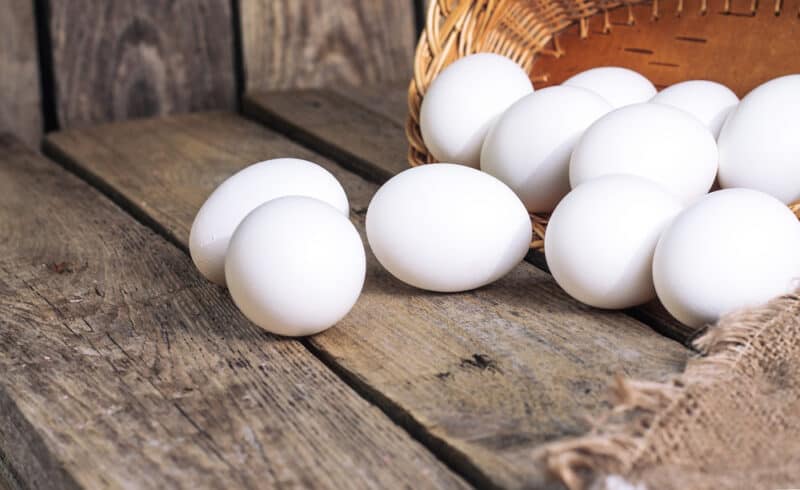
Topping out at only about five pounds at maturity, even Jærhøn roosters aren’t going to make good meat birds. The hens are only about three and a half pounds, a little bigger than a bantam, but not much.
When my hens are plump and fluffy in the summer, I can still spot the Jærhøns from a distance, just by size alone. But they don’t look overwhelmed in a flock, and these confident birds can hold their own.
My chickens all stop laying in the winter, but the Jærhøns are usually some of the first to pick up laying again in the spring. This year, they started up in mid-February, a few weeks before any of the other birds
Jærhøn Personality
Despite being some of the smallest birds in the flock, Jærhøns are confident leaders in the coop. They are incredibly social, friendly birds and rarely bully or squabble with their peers.
But, they can hold their own. No one bullies a Jærhøn. I have seen my Jærhøn hens face down geese. The roosters are scrappy little fighters – I once watched my littlest Jærhøn rooster drive off a hawk.
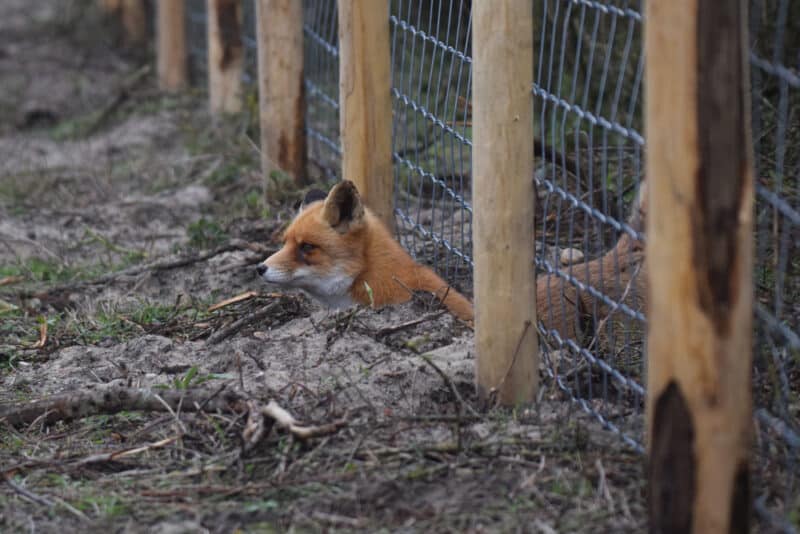
They’re friendly and sweet to the people and the animals that make up their barnyard. The roosters are kid-friendly and mild-mannered to their hens as well. They’ll get into scuffles with each other and with other roosters and birds, but they’re not interested in bullying.
If you’re building a flock for your family, and want to ensure your small children can confidently handle the birds, Jærhøns are a good option. They are sweet, friendly, and fearless.
Of course, that fearlessness can be a bit of a problem too. Jærhøns are escape artists. They can get out of almost anything, and they love to go exploring.
Jærhøns are excellent foragers. In fact, they’d rather forage than just scratch at grain. Because they can fly better than most chickens – they’re almost as good as guinea fowl at flying far and high – Jærhøns will escape and wander if they can.
They’ll even roost in trees sometimes instead of returning to the coop at night. It’s a bad habit, and despite being very vigilant birds, I have lost a few Jærhøns to predators because of their taste for adventure.
I have also lost Jærhøn roosters to predators because those little guys will do anything to protect their hens – even charge a fox. So that adventuresome spirit can be wonderful if you want a rooster who will go above and beyond the call of duty.
Health and Wellness
Jærhøns have no breed-specific health issues. They’re healthy and hardy in hot and cold weather. But remember that any bird will sicken with improper care. All chickens need space, plenty of fresh water, and a balanced diet.
Being a smaller breed, Jærhøns are physically better able to handle small spaces. They’re suitable for small backyard coops as long as they have some opportunity to forage. Jærhøns tend toward undesirable behaviors like egg eating when they’re bored.
A little time out and about in the yard is a great way to curb that.
Norwegian Jærhøn Pros and Cons
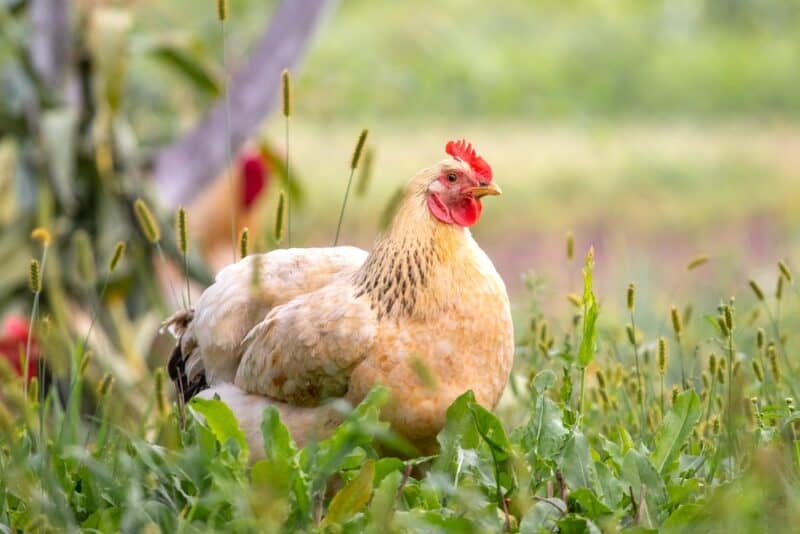
These compact, hardy birds are my favorite chickens. They’re fun to raise and delightful to know. But there are a few aspects of the breed that might make them less than ideal for your homestead. No bird is perfect for every home, so make sure you know what you’re looking for in a chicken.
Positives
Jærhøns have so many good positives as homesteading birds.
They’re great foragers. Really great foragers. They are the best chickens for insect control, competing well with guineas for tick-hunting in our yard.
Norwegian Jærhøns are friendly and sociable. They get along well with their flock and take well to new additions to the coop. They’re also gentle with people and easy to handle. That makes them an excellent choice for homesteaders with young children.
They are incredibly cold-hardy and equally heat-tolerant. My Jærhøns even seem comfortable when winter temperatures are well below 0°F. You’ll find them foraging eagerly in the summer, despite heat and humidity. This breed is just as happy in Alaska or Texas.
Jaerhons are consistent layers of beautiful, cream-colored eggs – perfect for brightening the egg basket.
These birds are naturally auto-sexing, which makes it so easy to tell the difference between males and females.
Cons
No bird is perfect and Jærhøns are not for everyone.
They are not meat birds. Jærhøns are small, light, and delicately built. These are not roasting birds.
Jærhøns are also expensive chicks. They’re rare in the US, and unless you have a very niche local hatchery, you’ll be ordering them online. Even online, they’re often hard to find or out of stock. They’ll probably cost double the price of more conventional breeds when you find them.
If you choose to spend the money on them, they’re an investment – which may put them out of reach of new chicken owners, homesteaders with a significant population of local predators, or just backyard coops with a budget.
They are escape artists. They like to fly up into a low tree and watch you struggle to get them down.
Since they’re smaller than many other chickens, they can squeeze through fencing or tiny holes in the coop. And if they can fit through a hole, they’ll go for it. These birds like to explore.
